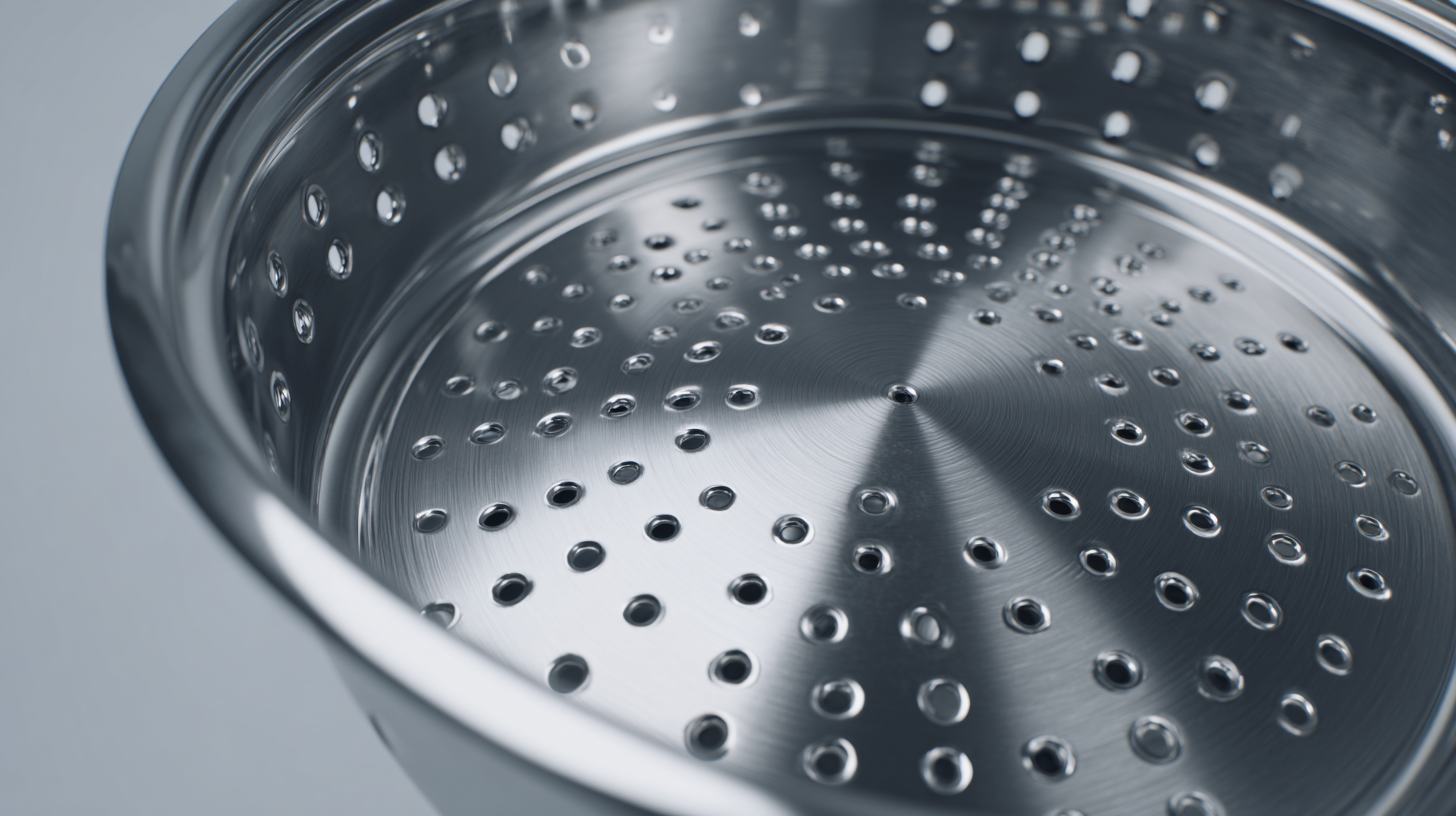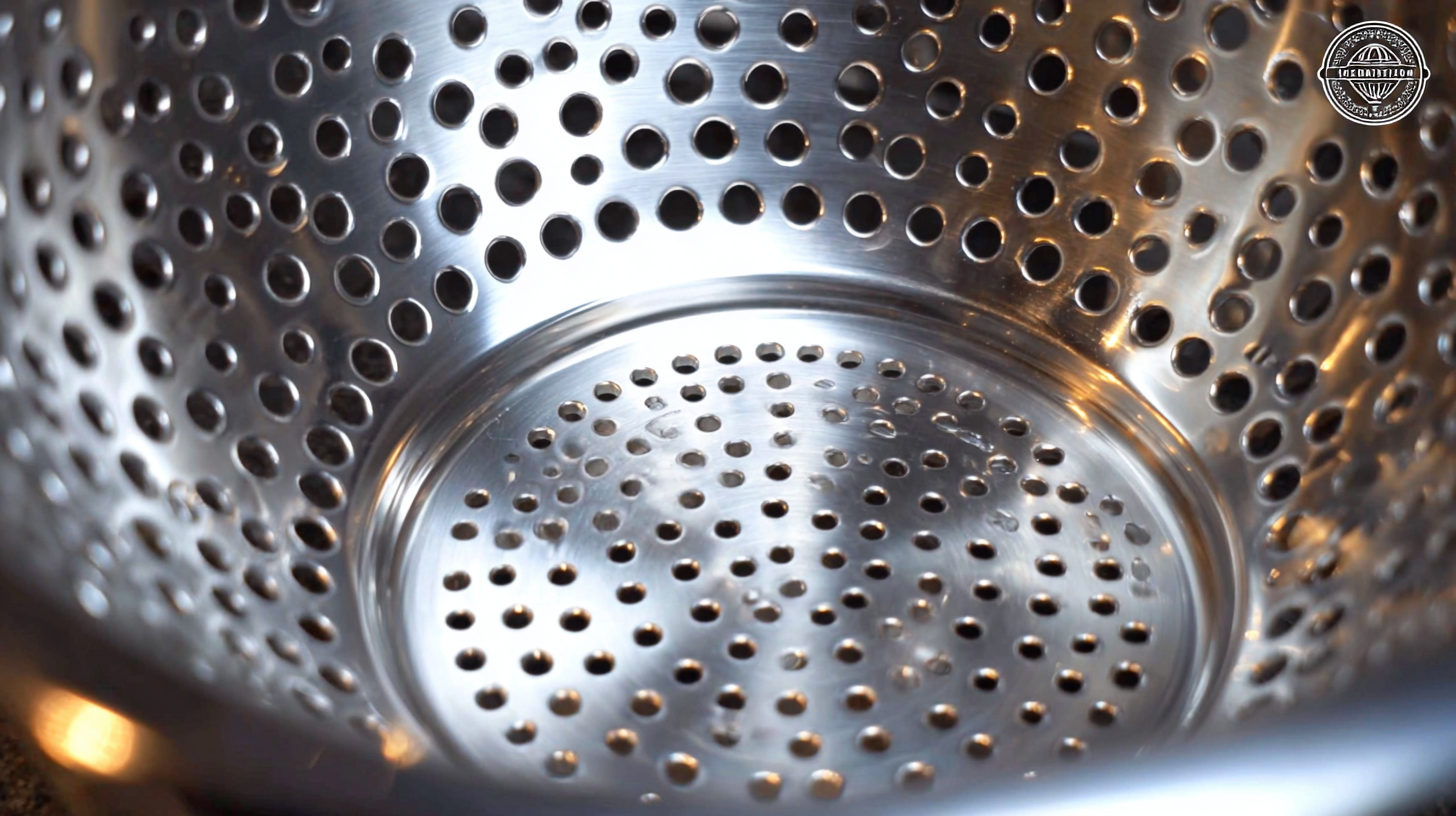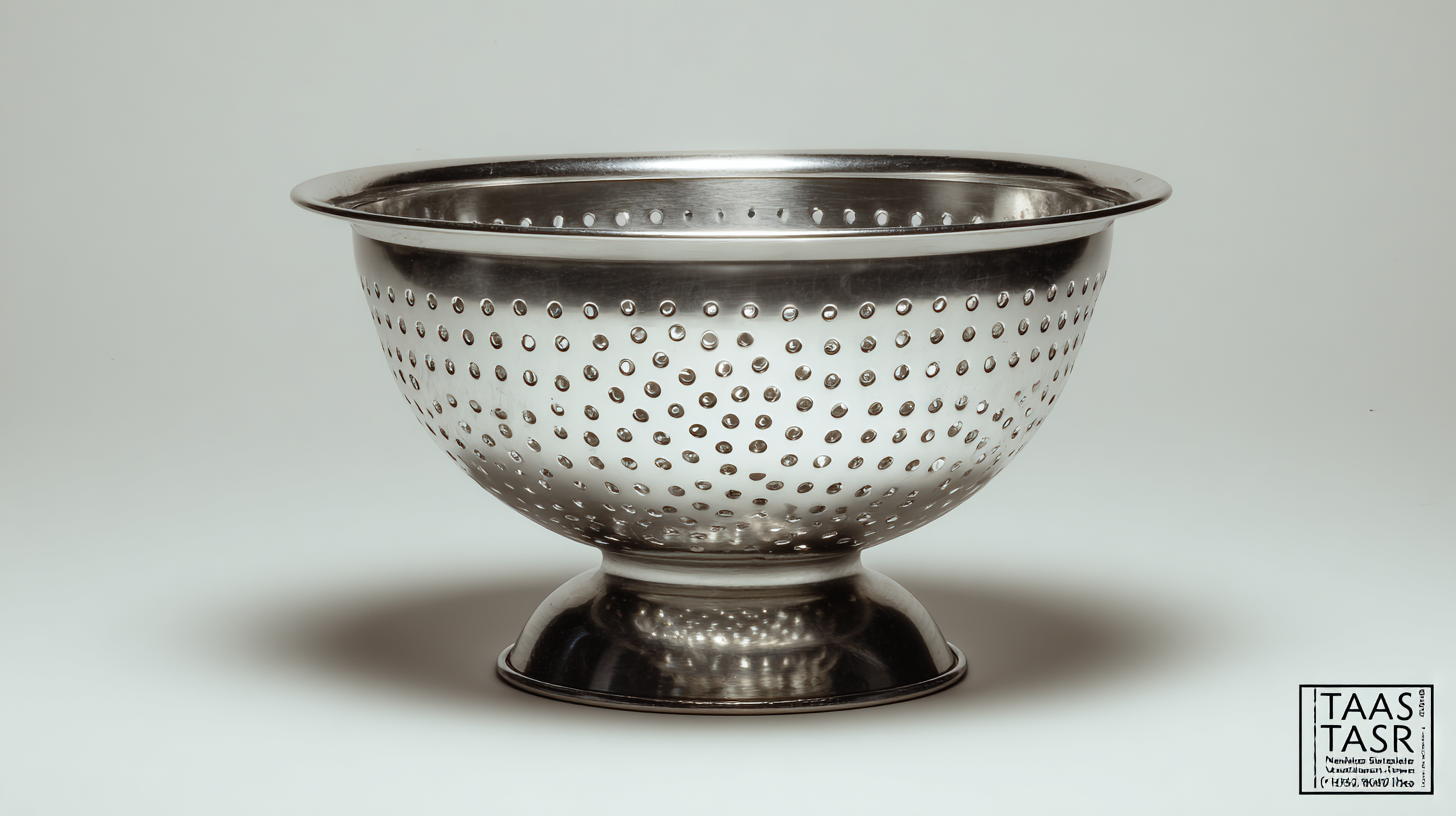Welcome to this website!

In today's global marketplace, understanding the manufacturing standards for kitchen utensils, particularly the Colander Strainer, is crucial for both consumers and manufacturers alike. As we delve into the nuances of industry import and export certifications, it becomes apparent that these standards not only ensure product safety and quality but also facilitate international trade. This blog will explore the various certification processes that impact the production and distribution of Colander Strainers, highlighting the importance of compliance with global standards.

Furthermore, we will provide a comprehensive guide on how to select high-quality Colander Strainers that meet these regulations, ensuring you make informed choices in your culinary endeavors. Join us as we navigate the intricate world of manufacturing standards and their relevance to the Colander Strainer, enabling you to understand what makes a reliable and efficient kitchen companion.
When exploring the global standards in manufacturing colanders, it is crucial to consider a few key factors that differentiate high-quality products. First and foremost, materials used in production play a significant role. Manufacturers should prioritize durable and food-safe materials, such as stainless steel or BPA-free plastics, to ensure both safety and longevity. Furthermore, the design should accommodate functionality—considerations like drainage efficiency and ease of cleaning are essential in evaluating a colander’s performance.
Another important aspect involves certifications and compliance with international manufacturing standards, which can vary greatly across countries. Regarded nations, such as the United Kingdom and Switzerland, highlight the significance of not only manufacturing excellence but also environmental sustainability and ethical labor practices. As suppliers expand globally, particularly in emerging markets like India and Vietnam, adherence to these standards becomes increasingly critical. Consumers can look for these indicators to ensure they are purchasing products that meet stringent global manufacturing criteria, thus supporting both quality and responsible practices in their choices.
When it comes to choosing the best colander strainer, the materials used in its construction significantly influence its efficiency and functionality.
Stainless steel remains the gold standard, providing durability and resistance to rust and staining. Its robust nature makes it ideal for high-temperature tasks, while its non-reactive surface ensures that the flavors of food remain pure, whether you're washing fruits or draining pasta.
In contrast, plastic colanders offer a lightweight and often more affordable option but may not withstand the same heat levels. This can be particularly crucial for those who frequently cook and require a sturdy tool that can handle boiling water or heavy ingredients without warping.
The growing market of strainers, including niche items like rice strainers, highlights an increasing consumer interest in practical kitchen tools that cater to modern culinary demands. With a shift towards more specialized products, understanding how different materials impact performance is essential.
For example, mesh strainers can provide finer filtration, making them perfect for tasks requiring precision, such as rinsing grains or straining sauces. As consumers become more discerning, selecting a colander or strainer that not only meets aesthetic standards but also enhances kitchen efficiency is paramount. This knowledge empowers home cooks to invest wisely in tools that elevate their culinary experience.
In the production of colander strainers, stringent quality control measures are essential to ensure product reliability and customer satisfaction. According to a report by the International Organization for Standardization (ISO), more than 50% of manufacturing defects arise from inadequate processes in quality control. Implementing ISO 9001 standards can significantly reduce defects by emphasizing continual improvement, process optimization, and meticulous documentation. This approach not only enhances product quality but also fosters consumer trust in brand reliability.
Moreover, manufacturers are increasingly utilizing Six Sigma methodologies to minimize variability in both raw materials and production processes. A study published in the Journal of Manufacturing Science highlights that integrating Six Sigma can lead to a 30% reduction in manufacturing errors. For colander production, this might translate into a decreased rate of leaks and structural failures, ensuring that the strainers perform effectively under high-stress kitchen environments. Ultimately, operators who focus on these quality control measures not only comply with global manufacturing standards but also position themselves competitively in the market.
| Quality Control Measure | Description | Standard Compliance | Frequency of Testing |
|---|---|---|---|
| Material Inspection | Assessment of raw materials for durability and safety | ISO 9001 | Every Batch |
| Manufacturing Process Audit | Evaluation of the production processes to ensure consistency | ISO 14001 | Monthly |
| Final Product Testing | Testing the final product for functionality and safety | ASTM F2384 | Every 1000 units |
| Packaging Inspection | Ensuring packaging meets safety and quality standards | ISO 22612 | Per shipment |
| Customer Feedback Monitoring | Collecting feedback to improve product quality | N/A | Ongoing |
In the world of kitchen utensils, colander strainers stand out for their functionality and versatility. Understanding the global manufacturing techniques behind these everyday items reveals a fascinating interplay of design, material science, and craftsmanship. Various countries employ distinct approaches reflecting their regional resources and customer preferences. For instance, in Italy, artisans often utilize high-quality stainless steel, focusing on durability and aesthetic appeal, whereas in Japan, manufacturers may prioritize precision and minimalistic design, creating strainers that are both functional and elegantly simple.

The comparative analysis of these techniques highlights how cultural values shape product characteristics. In many Asian countries, for example, lightweight colanders made from bamboo or silicone are favored for their portability and flexibility, catering to smaller kitchens and multi-purpose use. Meanwhile, in North America, the emphasis is often on robust, dishwasher-safe plastic, providing convenience for the busy home cook. The differences not only reflect local culinary habits but also influence the overall consumer experience, emphasizing the importance of understanding global manufacturing standards when selecting the best colander strainer for one’s needs.
When considering the safety of colander strainers, consumer regulations play a pivotal role in ensuring the materials used do not pose health risks during food preparation. Recent reports highlight that many plastic kitchen products, including strainers, can leach harmful chemicals if they are not manufactured under strict safety standards. According to industry analysis, it is crucial for manufacturers to adhere to guidelines set by regulatory bodies, which often include testing for toxic substances like BPA and phthalates. These chemicals can migrate into food, raising concerns regarding consumer exposure.

Moreover, comprehensive consumer safety evaluations show that products coming from less regulated markets frequently contain elevated levels of toxic substances, prompting calls for improved enforcement and transparency from authorities. Reports suggest that approximately 20% of household plastic items examined have tested positive for hazardous materials. This indicates a pressing need for shoppers to favor colanders that are certified by recognized safety organizations, to mitigate the risk of contaminants. Educating consumers on these standards can empower them to make safer choices, ensuring that the tools used in food preparation uphold the highest safety standards.
